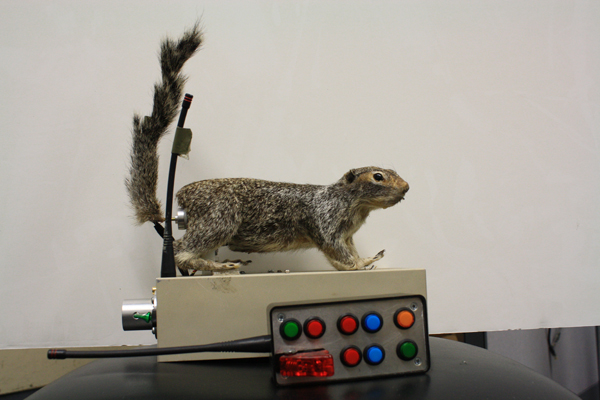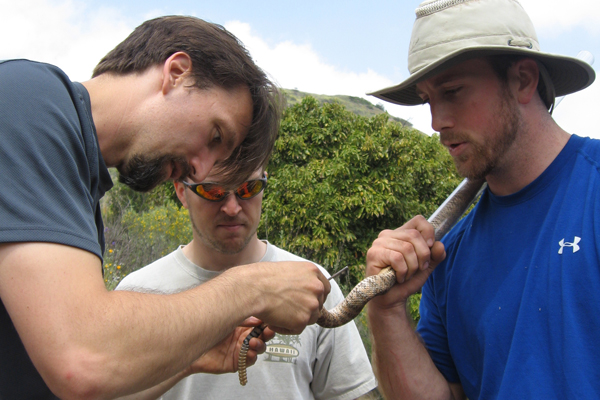Predator–Prey Relationship More Intricate Than Thought

This Behind the Scenes article was provided to LiveScience in partnership with the National Science Foundation.
In most wildlife documentaries, once a predator sees prey, it’s immediately “game over:” The prey will be swiftly and predictably mauled, killed and then devoured by the predator.
But research led by Rulon Clark of San Diego indicates that encounters between at least some predators and prey may be surprisingly intricate, with outcomes at least sometimes determined by subtle communications between the animals.
Squirrel vs. Rattlesnake
With funding from the National Science Foundation, Clark filmed interactions between rattlesnakes and California ground squirrels, which are among rattlesnakes’ favorite prey animals. Analyzing the footage, he found that when a California ground squirrel sees a rattlesnake, it may signal to the rattlesnake by wagging its raised tail back and forth.

Clark suspects that the squirrel’s tail signals tell the snake something akin to, “I see you, and, therefore, you have lost the crucial advantage of surprise. I am prepared to dodge and escape your attack. So don’t even bother wasting your precious energy on a potentially futile attack.” According to Clark’s research, such tail signaling may — as intended by the squirrel — inhibit the snake from attacking.
Talking Tails
Sign up for the Live Science daily newsletter now
Get the world’s most fascinating discoveries delivered straight to your inbox.
Clark’s hypothesis about the purpose of squirrels’ tail wagging is supported by the results of his experiments involving encounters between live, wild rattlesnakes and a mechanical, life-like squirrel — built by Clark’s team — that can be manipulated by remote control to recreate key elements of squirrel behavior.
The video featured here shows two of Clark’s experiments with the mechanical squirrel:
- The first experiment begins with a rattlesnake hiding in an ambush position in tall grass. The mechanical squirrel approaches the snake and repeatedly wags its raised tail. The snake shows no apparent response to the squirrel’s actions, remaining immobile. These results suggest that a hungry snake may be inhibited from attacking a nearby squirrel if the squirrel wags its tail at it.
- The second experiment begins with a rattlesnake hiding in an ambush position in a new location. The mechanical squirrel approaches the snake—but without wagging its tail. The snake moves next, biting the squirrel in the head region. These results suggest that a hungry snake may respond to a nearby squirrel by attacking it when it is not inhibited by tail signals from the squirrel.
Benefits of Mechanical Animals
Note that these types of experiments cannot be conducted with live squirrels because their behavior can’t be manipulated on command, as required for controlled experiments. By contrast, the mechanical squirrel’s behavior can be easily manipulated to support comparisons, like those included in Clark’s video, of a snake’s response to varied squirrel behaviors.
Because mechanical animals are easy to control and because the costs of building such animals are decreasing, more and more life-like mechanical animals similar to the Clark’s robotic squirrel are currently being developed and included in scientific studies of animal behavior and other topics.
FOR MORE INFORMATION
Learn more about Clark’s research by:
- Viewing more of Clark’s videos showing live and mechanical prey animals interacting with rattlesnakes at http://www.youtube.com/user.
- Reading an article about Clark’s research on NSF’s website.
Editor's Note: The researchers depicted in Behind the Scenes articles have been supported by the National Science Foundation, the federal agency charged with funding basic research and education across all fields of science and engineering. Any opinions, findings, and conclusions or recommendations expressed in this material are those of the author and do not necessarily reflect the views of the National Science Foundation. See the Behind the Scenes Archive.











